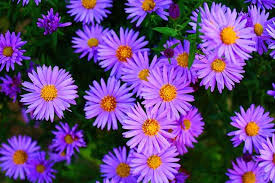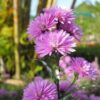**The Importance of Flowers in Ecosystems and Biodiversity**

Flowers play a crucial role in ecosystems and biodiversity, serving as essential components that support the health and balance of natural environments. Beyond their aesthetic appeal, flowers contribute to pollination, food production, and the overall resilience of ecosystems. Understanding the significance of flowers in ecological systems sheds light on their profound impact on biodiversity and the interconnectedness of life on Earth.
**Pollination and Reproduction:**
One of the primary ecological roles of flowers is to facilitate pollination, the process by which pollen is transferred from the male reproductive organs (anthers) to the female reproductive organs (stigma) of flowers. This vital process leads to fertilization and the production of seeds, ensuring the continuation of plant species. Many flowers rely on pollinators such as bees, butterflies, birds, and bats to transfer pollen between flowers, making pollination a cornerstone of plant reproduction.
**Supporting Biodiversity:**
Flowers contribute to biodiversity by providing habitat and food sources for a wide range of organisms. In addition to pollinators, flowers attract insects, birds, and other wildlife that play critical roles in ecosystem dynamics. For example, butterflies and moths rely on flowers for nectar, while certain plant species host specific insect larvae as part of their life cycle. The diversity of flowers supports a web of interactions that sustains various species and promotes ecological resilience.
**Ecosystem Services:**
Flowers offer valuable ecosystem services that benefit both wildlife and humans. These services include:
– **Pollination Services:** Pollinators contribute to the production of fruits, nuts, and seeds, supporting agricultural productivity and food security.
– **Soil Fertility:** Some flowers, like legumes, have nitrogen-fixing bacteria in their root nodules that enrich the soil with nitrogen, benefiting neighboring plants and promoting soil health.
– **Water Filtration:** Wetland flowers and aquatic plants help filter water, improving water quality and maintaining aquatic ecosystems.
– **Carbon Sequestration:** Trees and plants with flowers absorb carbon dioxide through photosynthesis, mitigating climate change by storing carbon in biomass and soil.
**Indicators of Environmental Health:**
The presence and abundance of certain flower species can serve as indicators of environmental health. Changes in flower populations or blooming patterns may signal shifts in climate, habitat quality, or ecosystem disturbances. Monitoring flower diversity and distribution can provide valuable insights into broader ecological trends and inform conservation efforts.
**Conservation and Preservation:**
Given their ecological importance, conserving flower diversity and protecting natural habitats are essential for maintaining biodiversity and ecosystem resilience. Efforts to preserve native flower species, restore degraded habitats, and reduce threats such as habitat loss, pollution, and climate change are critical for safeguarding the ecological services provided by flowers and promoting overall biodiversity.
**Conclusion: Preserving Nature’s Floral Diversity**
In conclusion, flowers are integral to ecosystems and biodiversity, serving as vital components that sustain life and support ecological functions. From pollination and food production to habitat provision and environmental indicators, flowers play diverse and essential roles in maintaining the health and resilience of natural systems. By recognizing the significance of flowers in ecological contexts and promoting conservation efforts, we can contribute to the preservation of biodiversity and the sustainability of our planet’s ecosystems.
**The Importance of Flowers for Ecosystems and Biodiversity (Part 2)**
Continuing our exploration of the significance of flowers in ecosystems and biodiversity, let’s delve deeper into how flowers contribute to the health, stability, and richness of natural habitats. From their role in supporting diverse species to their impact on ecosystem functions, flowers are integral components of ecological systems that warrant attention and conservation efforts.
**1. Habitat and Food Sources:**
Flowers provide essential habitat and food sources for a wide array of organisms, including insects, birds, and mammals. Nectar-rich flowers attract pollinators such as bees, butterflies, and hummingbirds, which rely on floral resources for their survival. In turn, these pollinators play a critical role in the reproduction of flowering plants, ensuring the production of seeds and the continuity of plant species within ecosystems.
**2. Keystone Species and Plant-Pollinator Relationships:**
Many flowering plants form specialized relationships with specific pollinators, highlighting the intricate web of interactions that underpins biodiversity. For example, certain orchids have evolved to attract specific bee species with unique floral shapes and scents, demonstrating co-evolutionary adaptations between plants and pollinators. These plant-pollinator relationships are often considered keystone interactions that sustain entire ecosystems by facilitating plant reproduction and supporting food webs.
**3. Genetic Diversity and Adaptation:**
Flowers contribute to genetic diversity within plant populations, enhancing their resilience to environmental challenges such as climate change and disease. Cross-pollination between different plant individuals promotes genetic variation, allowing populations to adapt and evolve over time. This genetic diversity is essential for maintaining healthy plant communities and ensuring the long-term viability of species in changing environments.
**4. Soil Health and Nutrient Cycling:**
Certain flowering plants, particularly legumes and nitrogen-fixing species, play a crucial role in nutrient cycling and soil health. These plants have symbiotic relationships with nitrogen-fixing bacteria in their root nodules, enabling them to convert atmospheric nitrogen into a usable form for plant growth. By enriching the soil with nitrogen, these flowers contribute to soil fertility and support the growth of neighboring plants, promoting overall ecosystem productivity.
**5. Erosion Control and Watershed Protection:**
Flowering plants contribute to erosion control and watershed protection by stabilizing soils, reducing runoff, and preventing sedimentation in water bodies. Deep-rooted plants like sunflowers and prairie grasses anchor soil particles, minimizing erosion caused by wind and water. Wetland flowers and aquatic plants help filter pollutants and nutrients from water, improving water quality and maintaining aquatic ecosystems.
**6. Cultural and Aesthetic Value:**
In addition to their ecological roles, flowers hold cultural and aesthetic significance for human societies worldwide. Flowers have been celebrated in art, literature, and ceremonies for centuries, reflecting their intrinsic beauty and symbolic meanings. The cultivation and appreciation of flowers contribute to cultural heritage and emotional well-being, highlighting the deep connection between humans and the natural world.
**Conservation Challenges and Solutions:**
Despite their ecological importance, many flower species face threats from habitat loss, climate change, invasive species, and unsustainable land use practices. Conservation efforts aimed at preserving native flower populations, restoring degraded habitats, and promoting sustainable land management practices are essential for safeguarding floral diversity and supporting ecosystem resilience.
**Conclusion: Preserving Floral Diversity for Future Generations**
In conclusion, flowers are indispensable components of ecosystems and biodiversity, playing essential roles in pollination, habitat provision, genetic diversity, and ecosystem functions. By recognizing the importance of flowers and promoting conservation initiatives, we can ensure the continued health and resilience of natural habitats for future generations. Let us celebrate and protect the floral diversity that sustains life on Earth, honoring the profound contributions of flowers to ecosystems, biodiversity, and human well-being.
—
This exploration underscores the critical importance of flowers for ecosystems and biodiversity, emphasizing their ecological functions, cultural significance, and conservation challenges. Discover the profound impact of flowers on the natural world and the imperative of preserving floral diversity for the sustainability of global ecosystems and the well-being of future generations.


